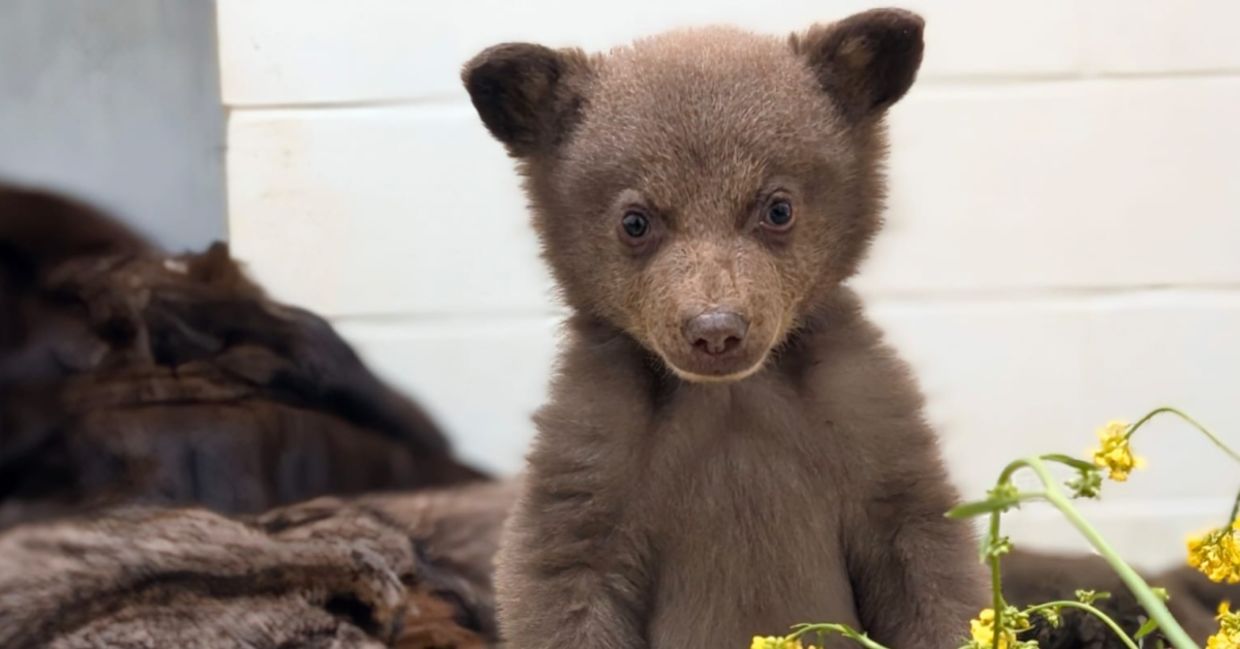
(Courtesy San Diego Humane Society)
What do you do when you come across a tiny baby bear cub alone in the woods? If the cub is too little to be on its own, it must be sent to a wildlife center to take care of it.
When two campers found a tiny 2-month old bear in the Los Padres National Forest, they called the California Department of Fish and Wildlife Service (CDFW) and according to a press release from the San Diego Humane Society, the staff attempted to reunite the young bear with its mother.
With no signs of the mother bear, the CDFW brought the cub to the humane society’s Ramona Wildlife Center in April 2025. But taking care of such a young cub is a challenge. He cannot be allowed to bond with humans, or he will not be able to be released back to the wild.
Caring for the Cub
This is the youngest cub the wildlife center has cared for and he arrived weak and underweight. “He was extremely fragile when he arrived,” Autumn Welch, Wildlife Operations Manager at San Diego Humane Society’s Ramona Wildlife Center, said in the press release. “After going several days without nutrition, it was touch-and-go at first. But now, he’s active, eating well and gaining weight.”
An Instagram from the organization explained: “The CDFW brought him to our Ramona Wildlife Center, where our team stepped in to give him the second chance he deserved.”
View this post on Instagram
But how do you keep the cub from bonding with his human caregivers? The staff at the wildlife center have to fool him by dressing up in bear costumes when they take care of the cub, reported NBC News.
The bear gets four enrichment sessions – which consist of maternal behaviors – and feeding sessions a day and he is doing well. If another bear cub is rescued, the center will put them together. This is critical to keeping the orphaned or abandoned cubs wild.
What’s Next?
The wildlife center, which is the only facility in San Diego County allowed to rehabilitate native predators like black bears, bobcats, and mountain lions, plans to care for the cub for up to a year. He will be released back to the wild when he’s old enough and strong enough.
The cub is the fourth very young bear who has entered rehab in California in the past five years, according to the press release. Raising a bear cub that young requires a huge amount of time, expertise, resources, and dedication.
“This is a very unusual case,” Welch said in the press release. “We don’t often see bears this young without their mother. It’s an honor to care for him, but it’s also a significant commitment.” This dedication helps to care for even the smallest creatures.
YOU MIGHT ALSO LIKE:
Staff at Wildlife Center Dress for Success
5 Rescued Bear Cubs are Released Back Into the Wild
First Koalas Rescued From Australian Bushfires Returned to the Wild







